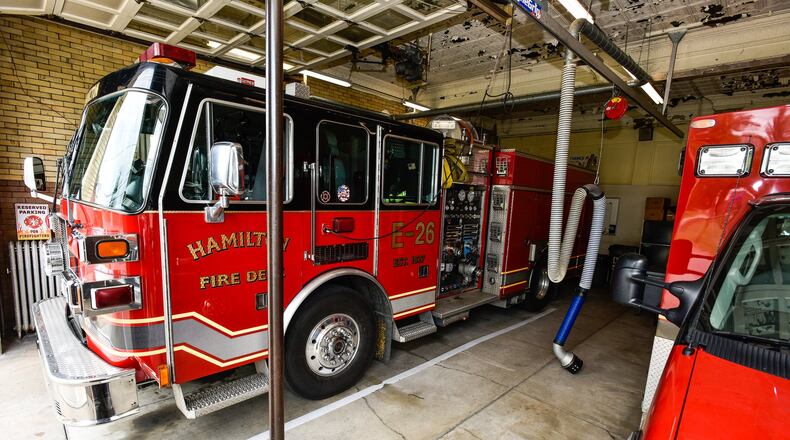Here’s a look at Hamilton’s income tax revenues since 2018:
- 2018: $27.35 million;
- 2019: $29.38 million, a 7.4 percent increase;
- 2020: $29.80 million, up 1.4 percent;
- 2021: estimated to be $30.5 million, up 2.3 percent.
The city last year based its 2021 spending plan on income-tax revenues of $27.9 million, which would have been a 6.4 percent drop, “but we believe it’s going to come in at $30.5″ million, which is 2.3 percent higher than 2020, City Manager Joshua Smith told City Council at a recent budget meeting.
As for budgeting the same amount of income-tax revenues next year as this year, “I truly believe this is a very conservative number,” Smith said. “I think it’s going to come in higher than this, but you never want to build a budget on too high of an expectation.”
The largest spending portion of the proposed plan, as always, will be public safety. Under the 2022 plan, police spending will rise 3.4 percent to $17.6 million, while spending on firefighters will climb 4 percent to nearly $14.7 million.
The city should finish this year with more than $11 million in funds that are not earmarked for spending, and that is expected to be the case at the end of 2022, Smith said.
“Even with all the spending we’ve done on catalytic projects and investing in the community, this puts us in a very strong financial position,” Smith said.
There are two main reasons for the city’s positive financial position:
- First, a decade ago, council approved a resolution creating a budget stabilization fund, or “rainy day fund.” Council decided the city should always have an excess of at less than 10 percent of its yearly operating expenditures. In cases where there is a fund balance of more than 16 percent, that money is swept into the budget stabilization fund, which now has more than $4 million.
- Second, the city in recent years has spent more of federal entitlement funds known as Community Development Block Grants to buy more safety equipment and make other improvements for fire and police staff. According to the U.S. Department of Housing and Urban Development, CDBG funds are intended to provide decent housing, suitable living environments and expanded economic opportunities for poor and middle-income people, principally for low- and moderate-income persons.
From 2018 through 2022, the city will have spent $1.48 million on fire station improvements, such as a $750,000 firefighting “Quint” truck.
“One of the best things I think we did a couple of years ago, we started investing more of our entitlement funding into capital equipment and capital repairs,” Smith said. “Someone brought this to our attention that other cities were doing this, and it’s really been a game-changer for us, because it’s freed up general-fund spending to go back into the pure operations, and has allowed us to stay on top of all the different equipment and capital needs that we have.”
Council Member Tim Naab during the meeting said, “The numbers are very good.”
About the Author

